What Are Microcentrifuge Tubes and Why Do Labs Need Them?
Microcentrifuge tubes are small, cone-shaped plastic containers that scientists use to store, mix, and separate tiny amounts of liquids in laboratories. These essential lab tools can hold between 0.5 to 2.0 milliliters of sample and are designed to spin at high speeds without breaking. Additionally, these tubes play a crucial role in modern scientific research, from DNA extraction to protein purification.
Most importantly, these tubes have become indispensable in research facilities worldwide. Furthermore, they offer precision and reliability that manual methods simply cannot match. Therefore, understanding their proper use is essential for any laboratory professional.
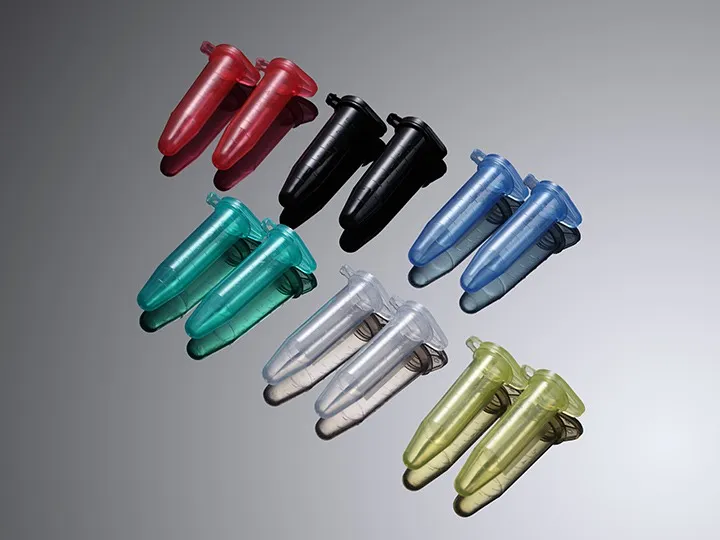
Market Overview: Key Statistics at a Glance
| Market Metric | 2025 Value | 2033 Projection | Growth Rate |
|---|---|---|---|
| Global Market Size | $114.47 million | $201.76 million | 6.5% CAGR |
| Sterile Tube Market | $72.3 million | – | 3.7% CAGR |
| Common Volumes | 0.5mL, 1.5mL, 2.0mL | – | – |
| Main Applications | Life Science Labs, Biological Labs, Medical Testing | – | – |
| Leading Companies | Thermo Fisher, Eppendorf, Corning, VWR | – | – |
Table of Contents
How Do Microcentrifuge Tubes Work in Laboratory Settings?
Microcentrifuge tubes work by using centrifugal force to separate different components in a liquid sample based on their weight and density. When tubes spin rapidly in a centrifuge machine, heavier particles move to the bottom while lighter ones stay on top. Moreover, this separation process allows scientists to isolate specific materials for further analysis.
The spinning process typically occurs at speeds between 1,000 to 15,000 revolutions per minute. Consequently, this creates enough force to separate cells, proteins, and other microscopic particles effectively. Therefore, researchers can extract exactly what they need from complex samples.
What Types of Microcentrifuge Tubes Are Available?
Standard Volume Options
The most common microcentrifuge tube sizes include:
- 0.5mL tubes: Perfect for small-volume samples and precious reagents
- 1.5mL tubes: The most popular size for general laboratory use
- 2.0mL tubes: Ideal for larger sample volumes and storage
Material Composition
Most microcentrifuge tubes are made from either:
- Polypropylene (PP): Offers excellent chemical resistance and clarity
- Polyethylene (PE): Provides flexibility and squeeze resistance
Cap Types
Furthermore, tubes come with different closure options:
- Attached caps: Prevent loss and contamination
- Snap-on caps: Allow easy opening and closing
- Screw caps: Provide the most secure seal
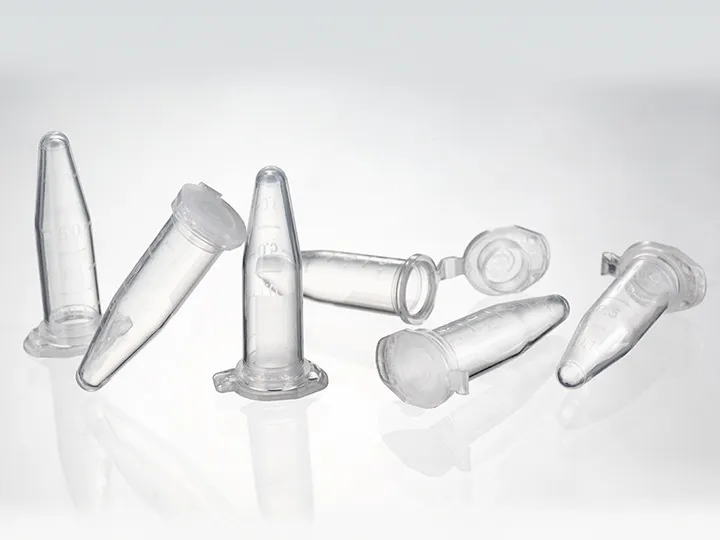
Which Applications Use Microcentrifuge Tubes Most Frequently?
Medical and Clinical Applications
Medical laboratories use microcentrifuge tubes primarily for blood component separation, diagnostic testing, and sample storage. These tubes help doctors identify diseases by isolating specific cells or proteins from patient samples. Additionally, they are crucial for COVID-19 testing and other molecular diagnostics.
Research and Development
Scientists rely on microcentrifuge tubes for:
- DNA and RNA extraction: Isolating genetic material for analysis
- Protein purification: Separating specific proteins from complex mixtures
- Cell culture work: Growing and maintaining cell lines
- PCR amplification: Copying DNA sequences for study
Quality Control Testing
Industries use these tubes for:
- Food safety testing: Detecting harmful bacteria in food products
- Environmental monitoring: Analyzing soil and water samples
- Pharmaceutical development: Testing drug purity and effectiveness
How Long Do Microcentrifuge Tubes Last?
Microcentrifuge tubes typically have a shelf life of five years from the date of sterilization when stored properly in a clean, dry environment. However, this timeframe can vary depending on storage conditions and manufacturer specifications. Therefore, always check expiration dates before use.
Proper storage involves keeping tubes away from direct sunlight and extreme temperatures. Moreover, maintaining them in their original packaging helps preserve sterility. Consequently, following these guidelines ensures optimal tube performance throughout their lifespan.
What Safety Considerations Apply to Microcentrifuge Tube Use?
Contamination Prevention
To prevent contamination, always use sterile microcentrifuge tubes and handle them with clean gloves or sterile instruments. Never touch the inside of tubes or caps with bare hands. Furthermore, work in a clean environment to maintain sample integrity.
Proper Handling Techniques
Key safety practices include:
- Wearing appropriate PPE: Gloves, lab coats, and safety glasses
- Using sterile techniques: Preventing cross-contamination between samples
- Proper disposal: Following hazardous waste protocols when necessary
Centrifuge Safety
When using tubes in centrifuges:
- Balance tubes properly: Ensure equal weight distribution
- Check tube integrity: Look for cracks or damage before use
- Follow speed limits: Don’t exceed manufacturer recommendations
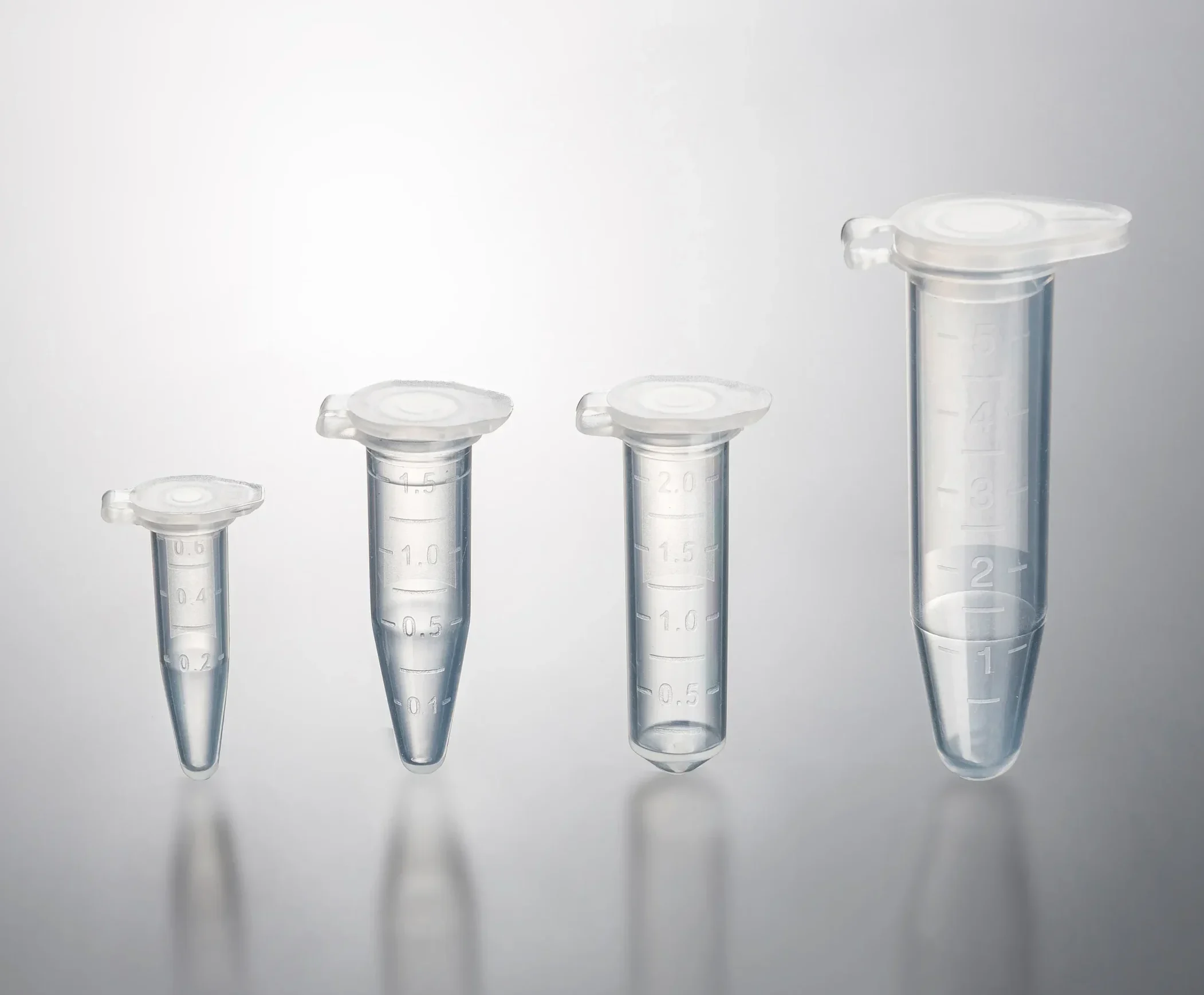
How Do You Choose the Right Microcentrifuge Tube?
Volume Requirements
Consider these factors when selecting tube size:
- Sample volume: Choose tubes with 20-30% extra capacity
- Storage needs: Larger tubes for long-term storage
- Equipment compatibility: Match tube size to centrifuge requirements
Material Selection
Different materials offer various benefits:
- Polypropylene: Best for most applications and chemical resistance
- Polyethylene: Good for samples requiring flexibility
- Specialized materials: For extreme temperature or chemical exposure
Quality Certifications
Look for tubes that are:
- RNase/DNase free: Essential for molecular biology work
- Sterile: Required for cell culture and clinical applications
- Certified: Meeting ISO or other quality standards
What Are the Current Market Trends for Microcentrifuge Tubes?
Growing Demand
The global microcentrifuge tube market is expected to grow from $114.47 million in 2025 to $201.76 million by 2033, with a compound annual growth rate of 6.5%. This growth reflects increasing research activities and expanding healthcare applications.
Innovation Areas
Current trends include:
- Sustainable materials: Biodegradable and recyclable options
- Smart features: RFID tags for sample tracking
- Specialized coatings: Low-retention surfaces for precious samples
Regional Growth
The market shows strong growth in:
- Asia-Pacific: Expanding research infrastructure
- North America: Advanced healthcare systems
- Europe: Pharmaceutical development investments
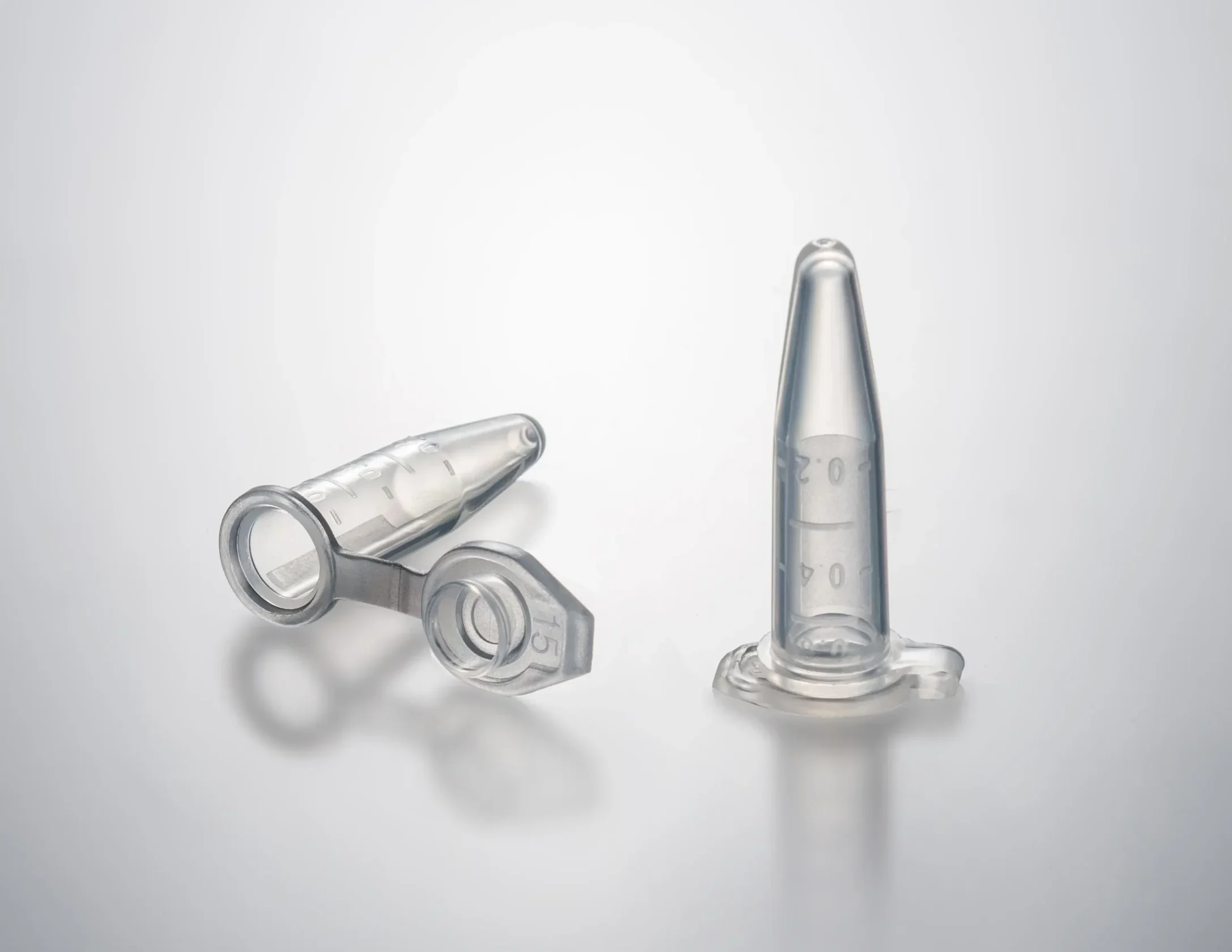
Frequently Asked Questions About Microcentrifuge Tubes
Can you reuse microcentrifuge tubes?
Generally, microcentrifuge tubes are designed for single use to prevent contamination and ensure reliable results. However, some high-quality tubes can be reused for non-critical applications after proper cleaning and sterilization. Therefore, always consider the specific requirements of your experiment.
What temperature can microcentrifuge tubes withstand?
Most polypropylene microcentrifuge tubes can handle temperatures from -80°C to +121°C safely. Nevertheless, polyethylene tubes typically have lower temperature limits. Consequently, check manufacturer specifications for your specific application needs.
Are all microcentrifuge tubes sterile?
Not all microcentrifuge tubes come pre-sterilized. Therefore, you must purchase specifically labeled sterile tubes for applications requiring sterility. Moreover, some labs sterilize tubes themselves using autoclaves or gamma irradiation.
How do you prevent sample evaporation?
To prevent evaporation, ensure caps are tightly closed and consider using tubes with screw caps for long-term storage. Additionally, store samples at appropriate temperatures and use parafilm for extra sealing if necessary.
What causes microcentrifuge tubes to crack?
Tubes can crack due to excessive centrifugal force, temperature shock, or age-related material degradation. Furthermore, improper handling or using damaged tubes can lead to failure. Therefore, always inspect tubes before use and follow manufacturer guidelines.
Best Practices for Microcentrifuge Tube Storage and Handling
Storage Recommendations
- Temperature control: Store at room temperature unless specified otherwise
- Humidity management: Keep in dry conditions to prevent moisture absorption
- Original packaging: Maintain sterility by keeping tubes in original containers
- Inventory rotation: Use older stock first to prevent expiration
Handling Guidelines
- Gentle manipulation: Avoid excessive force when opening or closing
- Proper labeling: Use appropriate markers and labels for identification
- Clean workspace: Maintain sterile working conditions
- Regular inspection: Check for damage before each use
Troubleshooting Common Microcentrifuge Tube Issues
Tube Leakage
If tubes leak during centrifugation:
- Check cap tightness: Ensure proper closure
- Inspect for damage: Look for cracks or deformation
- Verify compatibility: Match tube type to centrifuge requirements
- Replace if necessary: Don’t risk sample loss
Poor Separation Results
When separation is incomplete:
- Increase speed gradually: Build up centrifugal force slowly
- Extend time: Allow more time for separation
- Check sample preparation: Ensure proper sample handling
- Consider tube type: Some applications need specific tube materials
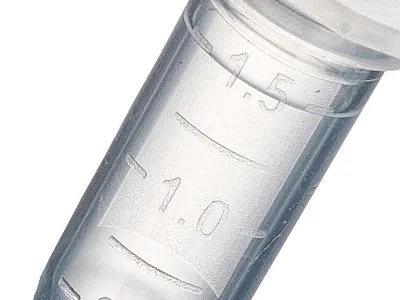
Frosted writing area design for easy experimental recording
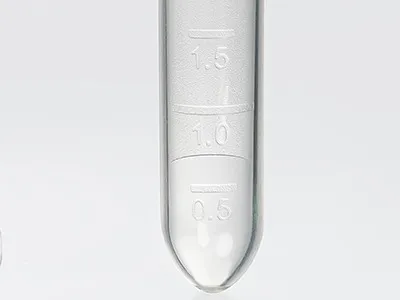
Smooth tube body and clear scale
Conclusion: Making the Right Choice for Your Laboratory
Microcentrifuge tubes represent a fundamental component of modern laboratory operations. Therefore, selecting the right tubes for your specific applications is crucial for achieving reliable results. Moreover, understanding proper handling and storage techniques ensures optimal performance and sample integrity.
Whether you’re conducting medical diagnostics, research applications, or quality control testing, these small but essential tools play a vital role in scientific advancement. Furthermore, with the market continuing to grow and innovate, staying informed about new developments helps laboratories maintain their competitive edge.
Remember to always consider your specific needs, including volume requirements, material compatibility, and sterility needs when choosing microcentrifuge tubes. Most importantly, following proper handling and safety protocols protects both your samples and laboratory personnel.
Ready to upgrade your laboratory’s microcentrifuge tube selection? Visit OBO Biology Technology to explore our comprehensive range of high-quality laboratory consumables designed for precision and reliability.
🔐 Privacy respected. No spam. Ever.
